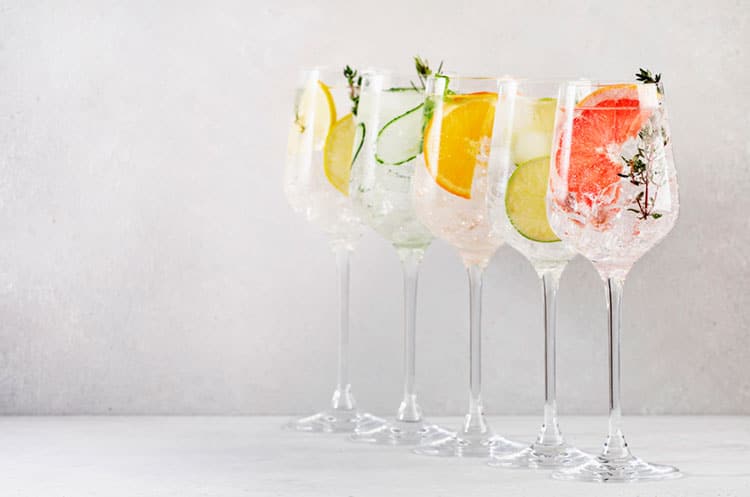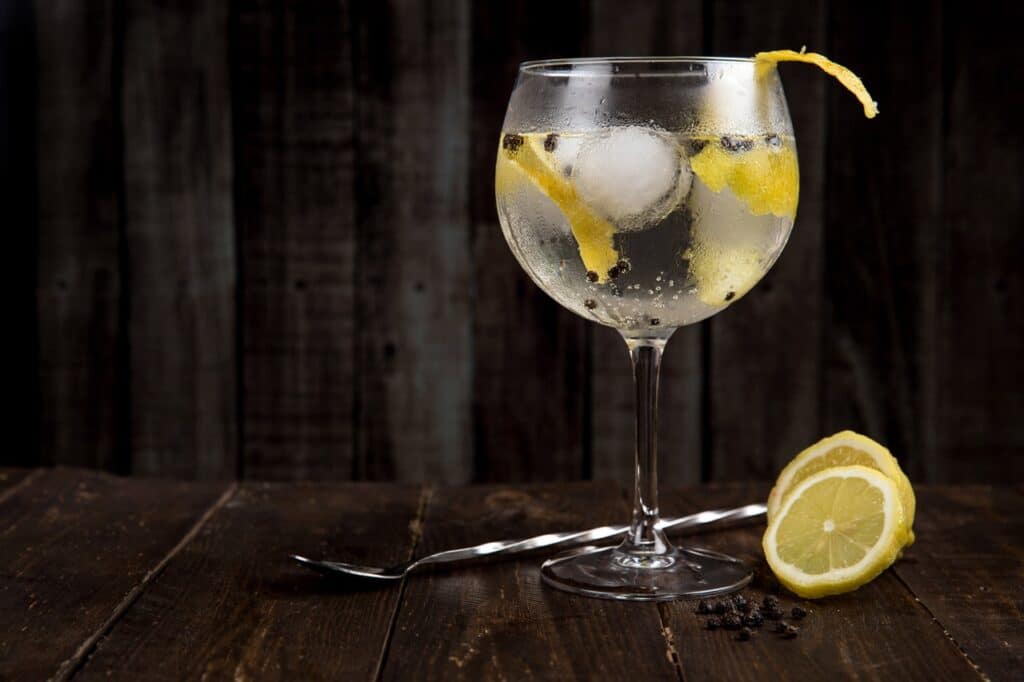Gin and vodka bear a number of similarities, so much so that one can be substituted for the other in certain recipes. Both are clear spirits that undergo the same distillation process to create their initial base. Both are distilled from fermented ingredients, which are first boiled to release alcohol molecules into the air before they are collected. For greater purity, this can be redistilled multiple times.

Both vodka and gin are very popular spirits, however, there are some differences between the two that inform how they are used.
The first difference is of course the flavour. When it comes to ingredients, the base for both gin and vodka can be made out of almost anything, with the primary ingredient being first fermented and then distilled to remove as much flavour as possible. Despite the many variations that are available now, vodka is a neutral spirit usually made from potatoes or some form of grain, it does not have a distinctive identifiable flavour or aroma. Gin on the other hand is made using juniper berries, which are added following the initial distillation resulting in a herbaceous and often ‘floral’ liquid.
This is where the main point of difference occurs in the process of creating a gin vs. a vodka – the inclusion of juniper berries is what gives gin its distinctive flavour. Gin is most commonly made from malt and grain, fermented before it is then distilled and the flavours infused using various processes. At the Big Hill distillery, our gins are made using a fermented high quality wheat and botanicals are vapour infused during distillation. Usually bottled at 40% ABV, the flavours of the ingredients used to create gins are usually quite distinguishable and can determine the best garnishes and tonics to mix with. The Spirit of George, for example, is best served with a neutral tonic accompanied by a slice of orange.

Along with the differences in the creation of the liquids, gin and vodka are also different in how they are served. Vodka is most popular when served at a very low temperature, with the chilling of the liquid and the addition of ice often improving the texture of the liquid, creating a smoother drinking experience. The more distinctive aromatic flavours of gin allow for a pleasant drinking experience even at room temperature, so serving temperatures tend to vary more based on the preference of the consumer.
When it comes to cocktails, both gin and vodka are popular spirits long used to create iconic and classic recipes. As an ingredient, vodka’s flavourless characteristics make it a versatile option, allowing it to take on the flavour and characteristics of the liquids that it is mixed with. For example, the classic Bloody Mary is created using a mixture of ingredients including tomato juice and Worcestershire sauce, with the vodka rarely a distinguishable ingredient. In contrast, when used as a cocktail ingredient, the distinctive herbal notes of gin has made it a popular choice amongst mixologists for decades, with gin actually forming the base spirit for many of the first ever batches of classic cocktails.
Both spirits have a rich history, with vodka dating back to around the 14th century. Its name is derived from ‘Voda’ – a Russian word that translates to ‘water’ or ‘little stream’. Gin goes even further back to the 11th century, with an early version of the juniper-based spirit created by monks. Gin, as we know it today, comes from the Dutch ‘Genver’ – a wine-based medicinal spirit, with the early gin and tonic often mixed with quinine to protect colonisers and soldiers against Malaria. It gained popularity as a cocktail ingredient, particularly in England, in the 18th Century.

The popularity and longevity of both vodka and gins peaks to their versatility, which makes them a consistent favourite amongst mixologists and drinkers. As the drinks industry continues to innovate, we are constantly seeing both categories develop, with new flavour infusions appearing every day and trends for both spirits leading to new and exciting serving suggestions.
The growing demand for craft and artisan spirits has led to an increased quality, particularly in the gin market. Smaller distilleries such as The Big Hill Distillery have the ability to closely monitor quality, controlling the full end-to-end process from botanical sourcing through to waxing, bottling and delivering so that distillers are able to handle quality assurance on every bottle that goes out.
Both gin and vodka remain an absolute staple for both professional and amateur mixologists, and with summer just around the corner it’s the perfect time to top up the drinks cabinet and enjoy a sip in the sun. We hope this has helped clear up the difference between gin and vodka – let us know if you have any questions.
Written by the gin distilling experts at The Big Hill Distillery, Co-founders and Distillers David Clayton and Ben Kaberry. David and Ben founded The Big Hill Distillery in 2017 following a conversation in a local pub in Mobberly, Cheshire. They have gone on to win a number of international awards and accolades, including IWSC Gold 2019, and San Francisco World Spirits Competition Gold 2021. Most recently, they have released a special edition of their award-winning ‘Spirit of George’ gin with luxury British retailers Fortnum and Mason.

